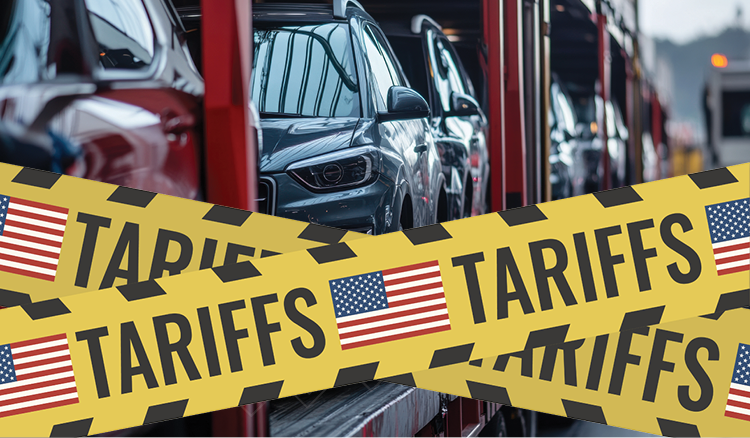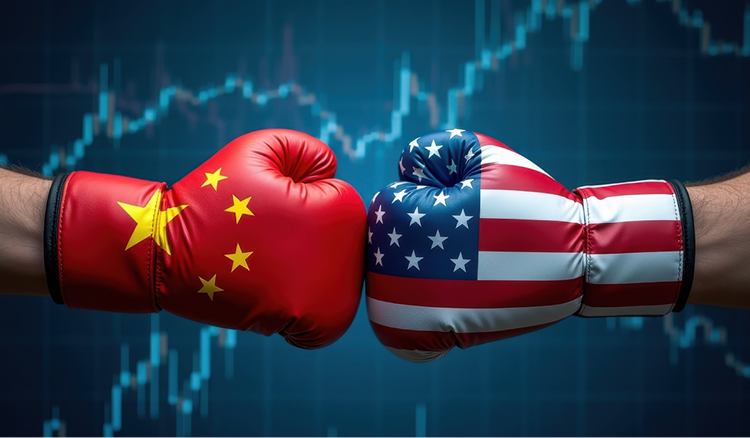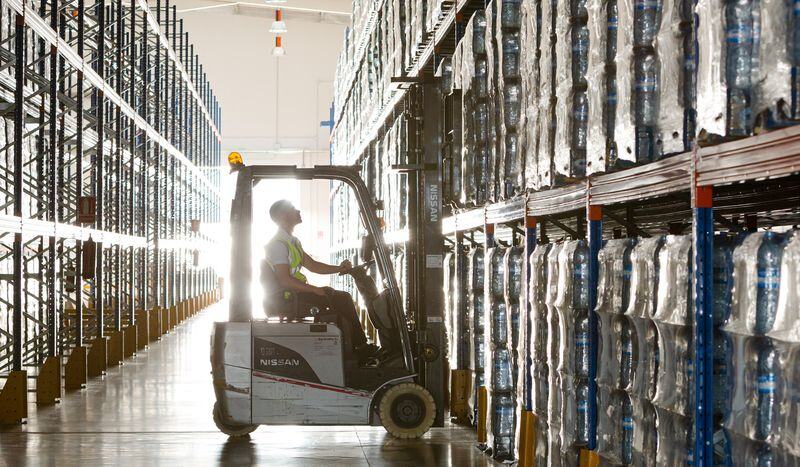Trump’s New Tariff on Imported Vehicles: Details, Implications, and How Veryable Can Help
With vehicles and parts being some of the main products the U.S. imports, this new tariff is sure to have a drastic impact on the automotive industry and economy as a whole.
In this article, we’ll break down the details and implications of this new tariff, and discuss how leveraging Veryable can provide a competitive advantage at this moment in time.
Details
On Thursday April 3rd at 12:01AM, a 25% tariff went into effect which applies to all imported sedans, SUVs, crossovers, minivans, cargo vans and light trucks*.
*Light Trucks - Vehicle weight up to 8,500 lb; payload capacity up to 4,000 lb
In addition to helping increase domestic vehicle production and create thousands of new jobs, the Trump administration believes that this tariff will create a significant amount of revenue that can be used to pay down the national debt.
The tariff on parts however is scheduled to go into effect on May 3rd, and the Trump administration has stated that they are developing processes to expand these tariffs if necessary. For now, the parts subject to this tariff include engines, transmissions, powertrain parts, and electrical components. The reason for this tariff on parts is that it prevents companies from trying to avoid these tariffs by importing cheap parts and then completing final assembly domestically.
It’s also important to know that for now at least, imports from Canada & Mexico will experience somewhat of a reprieve. According to the White House, auto importers will have the opportunity to certify their U.S. content, with systems in place to ensure that the tariff is only applied to the value of non-U.S. content. For example, if a car’s import value is $60,000 and the U.S. content is 25%, the tariff would apply to $45,000. Under the USMCA agreement signed by President Trump in 2020, a car must meet the following criteria to be USMCA compliant: 75% of core parts must originate from the region, other parts must contain 65–70% regional content, at least 70% of the steel & aluminum must be sourced from North America, and 40–45% of the vehicle’s content must be manufactured by workers earning at least $16/hour.
On the other hand, any non-USMCA-qualifying cars built in Canada or Mexico will be subject to the full 25% tariff on its entire value, regardless of the U.S. content.
Who Will Be The Most Impacted?
In 2024, U.S. auto imports amounted to nearly $250 billion. For context, 31.8% of cars, and 20.9% of light truck sales in the U.S. were imports.
These imported vehicles come primarily from:
- Mexico: $49.98 billion (22.8%)
- Japan: $40.76 billion (18.6%)
- South Korea: $38.02 billion (17.3%)
- Canada: $28.40 billion (12.9%)
- Germany: $25.59 billion (11.7%)
- United Kingdom: $9.81 billion (4.5%)
- Slovakia: $6.30 billion (2.7%)
- Italy: $3.98 billion (1.8%)
- Sweden: $3.97 billion (1.8%)
- China: $3.82 billion (1.7%)
And the manufacturers that will be most impacted by these tariffs include:
- General Motors (750,000 vehicles imported in 2024)
- Toyota (657,000 vehicles imported in 2024)
- Mazda (640,000 vehicles imported in 2024)
- Hyundai (600,000 vehicles imported in 2024)
- Kia (580,000 vehicles imported in 2024)
- Nissan (550,000 vehicles imported in 2024)
- Volkswagen (500,000 vehicles imported in 2024)
- BMW (450,000 vehicles imported in 2024)
- Mercedes-Benz (430,000 vehicles imported in 2024)
- Subaru (400,000 vehicles imported in 2024)
Initial Responses from Automakers
Even before the announcement of this tariff, numerous automakers have already expressed plans to reshore operations.
- Stellantis announced that they plan to reopen an assembly plant in Belvidere, IL where they will produce the next generation Dodge Durango. This facility will be reopened in 2027 and is expected to create roughly 1,500 jobs. Additionally, Stellantis has also stated plans to invest more in both its Toledo Ohio and Kokomo Indiana facilities.
- Hyundai recently announced a $21 billion investment in the U.S., including $5.8B for a new steel plant in Louisiana, which will produce the steel used by Hyundai’s U.S. vehicle manufacturing plants. Additionally, Hyundai announced plans to increase production capacity at their new Georgia plant from 300,000 vehicles per year to 500,000.
- Rolls-Royce is exploring transferring production from the targeted countries to the US, where it already employs 6,000 workers across 11 sites. As a Rolls-Royce spokesperson puts it, “We have additional capacity within some of our U.S. operations and continuously seek to explore options to ensure that our global internal supply chain is optimised for delivery to customers.”
- VW Group leadership is considering setting up U.S. based production facilities, given that brands under the core VW group like Porsche and Audi do not currently produce any vehicles domestically.
- Honda: has decided to produce its next-generation Civic hybrid in Indiana instead of Mexico, to prevent one of its most popular models from being subject to this new tariff.
- Nissan: CEO Makoto Uchida has recently suggested that Trump’s tariffs would force them to shift its production outside of Mexico.
- Volvo: has previously stated that whether they will shift production to the U.S depends on how high the tariffs will actually be, with CEO Jim Rowan implying in March that while a 10% tariff they could work with, a 25% tariff would essentially force them to reshore. With the tariff implemented being the higher 25%, Volvo only has one option.
For now however, large automakers like GM and Ford haven’t yet announced any major plans to shift production, and they claim they won’t until it’s looking like these tariffs are here to stay. Given that any new factories likely wouldn’t open until the final year of Trump’s second term, leaders from these companies are worried about what would happen if a new President enters office in 2028 and walks back all of these tariffs.
Immediate Implications
Pretty much anywhere you look, you’ll hear people expressing concerns that these tariffs will drastically increase the prices of new vehicles, repairs, car insurance, and more. This is why new vehicle sales have spiked in recent weeks, and why stock prices for foreign automakers like Toyota, Hyundai, and Nissan have all dropped.
While many sources have previously reported that Trump has threatened automakers to not raise prices, Trump cleared the air in an interview last Saturday with NBC, stating “I couldn’t care less. I hope they raise their prices, because if they do, people are gonna buy American-made cars. We have plenty.”
This statement basically implies that automakers complaining about having to raise prices will have zero effectiveness in getting Trump to budge. This leaves automakers with one choice - build your cars and components in America or dig your own grave.
While it’s still too early to know which automakers will raise prices and by how much, Ford’s decision this morning to actually slash prices instead of increase them is sure to have a major influence on other automakers' decisions. Yes you read that right, Ford just announced that American consumers will have access to Ford's employee pricing discount from now until June 2, which is below even the dealer invoice price. EV buyers will also receive a complimentary home charger and free installation. Excluded from this deal however, are the Expedition and Navigator SUVs, as well as Raptor and Super Duty Trucks.
While no other automakers have made similar announcements in the hours following Ford’s, it’s likely others will in the near future, especially major competitors of Ford. Given the limited duration of Ford’s discounted pricing, demand for Ford’s vehicles is certain to spike over the next two months, and this means poor Q2 sales for competitors like GM and Stellantis unless they offer something similar.
On the other hand, both Mercedes and VW have announced that they will be raising prices. Realistically though, this move will hurt these companies more than it hurts consumers, as most consumers will just opt to either purchase American made alternatives, or continue repairing and driving older vehicles.
Also, demand for EVs is likely to drop significantly in the coming months, given that many battery-related components for these vehicles are imported, and the fact that Trump has contemplated eliminating the EV tax credit. While this would render many of the new factories currently being built to produce EVs useless, automakers could potentially repurpose these new factories to produce gas powered vehicles or components that are currently being manufactured in Canada or Mexico.
How Companies Should Proceed
Automakers impacted by these tariffs need to move fast and quickly shift production back to the U.S., or else they could be forced to raise prices in order to stay profitable. This will crush demand, especially in light of Ford’s recent announcement.
The challenge is, it can take several years to build new factories and expand existing ones, meaning in the short-term, many of these automakers will be forced to absorb the costs.
With a more efficient approach to production however, manufacturers dependent on components or materials produced in tariffed regions can partially offset higher production costs, helping them to avoid passing costs to consumers while they work to reshore production.
Enter Veryable.
The Veryable Advantage
With a flexible workforce in place, manufacturers can minimize fixed cost exposure and maintain a lean full-time headcount while having essentially infinite flexible capacity just a few clicks away.
This means on slower days, manufacturers don’t have to pay workers to stand around. And on busier days, they have as much capacity as they need.
In the automotive industry where demand fluctuates constantly and often in a highly unpredictable manner, this provides the best of both worlds.
In addition to improved service and quality, manufacturers who have adopted this strategy commonly see significant reductions in labor costs. Given that labor costs are one of the largest expenses for these companies, eliminating waste in this area can have a major impact on profit margins.
But that's not all, leveraging Veryable can also help manufacturers drastically increase labor capacity in just 1-2 days, without the need for long hiring cycles or the headaches of dealing with staffing agencies.
To use a car analogy, having Veryable implemented into your operations is like driving a modern performance car with a 10 speed dual clutch transmission and paddle shifters. See a gap? Click to downshift and now you’re right in the powerband and that gap is yours. No need to floor it and wait 3 seconds for the transmission to downshift and put you in a gear you can accelerate from. And just like how these modern transmissions have enabled 150hp cars to accelerate from 0-60 and 50-70 faster than a 200hp car could from a decade ago, Veryable allows businesses to do more with fewer resources.
Plus with nearly 700,000 skilled and vetted operators on the Veryable platform, companies have essentially an infinite supply of legal labor at their fingertips. In addition to helping them quickly scale up to address spikes in demand, having access to this has helped our users acquire competitors, launch new facilities ahead of schedule, and expand into new markets.
Conclusion
Things are evolving rapidly, and it’s very likely that new announcements will come in the next week regarding:
- Plans to reshore from automakers
- Price adjustments on new vehicles
- Retaliatory actions from trade partners
Having walked a mile in your shoes, we know it can be hard to keep up with all of these new developments, and that’s why we intend to be your one stop shop for information and insights regarding the changes taking place under Trump 2.0.
On our Navigating Trump 2.0 page, is a full breakdown of the changes that have taken place so far, as well as an outline of what’s to come. Also on this page, you’ll find a plethora of blog articles that discuss how leveraging Veryable will position your business to thrive in the coming months.
Lastly, make sure to check out our new U.S. Manufacturing Today Podcast. Hosted by our Head of Reindustrialization Matt Horine, this podcast dives deep into these changes and their implications for manufacturers and distributors.
To learn more about how Veryable can help you navigate these uncertain times, contact us or visit our info for your role page.
Previous Posts
Make The Most of The 100 Days of Summer With Veryable
The Future of Manufacturing and Logistics
Create a free business profile today to explore our platform.






